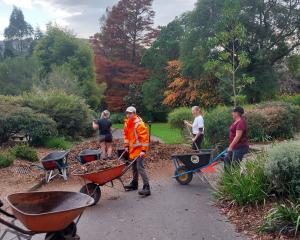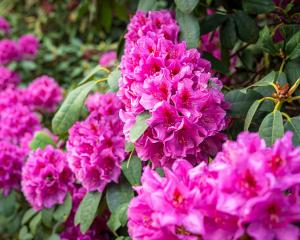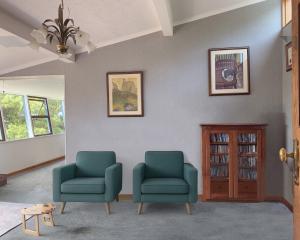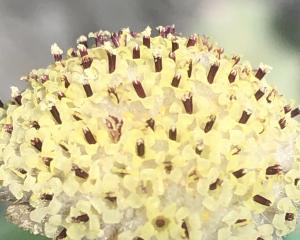Tasmania's climate is often compared to southern New Zealand's. Gillian Vine discovers why in a garden specialising in spring bulbs.
In early spring, Tasmania feels just like home, with warm, sunny days interspersed with showery spells. In most places, the wattles are in full bloom, but spring comes later at Nietta, inland from the northern coastal town of Ulverstone.
Nietta's attractions are two-fold: Leven Canyon draws some 60,000 visitors a year who come to stand at the top of 300m limestone cliffs, while savvy plant-lovers stop off at Kaydale Lodge Gardens to admire the 30,000 daffodils and carpet of fritillarias in spring or masses of maples in autumn.
In 1963 Robert Crowden, then 22, bought a farm not far from Leven Canyon.
He met a Queensland lass, Kay, who was in the area on a working holiday and undeterred by the fact that the farm gets snow in winter and spring is as late as in Otago, she married Robert and they began creating a garden.
Kay soon began to appreciate the beauty of cool-climate plants.
"The paeonies do really well here and the trilliums and erythroniums and everything that likes the cold," she says.
Their love of plants has been passed on to the couple's daughters. Amarlie breeds hellebores, while Lesley's specialist interest is trilliums.
Amarlie's fine selection of double hellebores started a decade ago with "one old white that came from England years ago" and her breeding programme, now in the fourth generation, concentrates on doubles and anemone types. She is now working on breeding double picotees and yellows.
The Pear Walk was planted in 1994 with 25 Buerre Bosc trees, which seem to love the climate at Kaydale, as they fruit copiously.
When the trees had grown over the frame, Amarlie grafted them together to keep them compact, as they are unable to grow past one another. Pruning twice in summer also helps limit growth.
Lesley's main interest is in rare bulbs. She has an enviable line-up of fritillarias - about 60 of the 100 known species - including pink-flowered Fritillaria pluriflora, a rare North American species known by the common name adobe lily; and F. michailovskyi, which is a native of Turkey and has unusual brown and yellow blooms. Another rarity from Turkey is F. sibthorpiana, whose flowers are green and yellow.
Lesley has taken a novel approach to rockery gardening - and one worth copying - building it up, rather like a rocky table. Rocks from the farm were positioned in an oblong, the centre was filled with earth, and blue metal and compost were dug in. Not only does this give good drainage, but it makes the area easier to work and there is no bending to appreciate small blooms, such as Lesley's collection of tiny tulips and Tecophilea species.
Robert also loves bulbs. "Dad's a daff nut," Amarlie says of him.
"He has about 1800 varieties and it's the one thing he doesn't mind moving the fences for."
For 18 years, Robert imported narcissus from the United States.
"It's really paid off. I've got some really vibrant pinks," he says.
The 2ha of garden has a woodland area - Kay and Robert's first project - a zen garden whose tranquillity and minimalist approach is in contrast to exuberance of the Tasmanian garden area, which has masses of small bulbs and a waterfall; and a productive vegetable garden, redesigned a couple of years ago into a series of smaller beds to make harvesting easierBut it is trees that get Kay Crowden most excited.
"I'm a maple freak. I absolutely love them and we've 80 to 100 different varieties," she says.
Her favourite, though, is a monkey puzzle, which she and Robert planted 31 years ago.
"It's my pride and joy."
See it
Kaydale Lodge Gardens, 250 Loongana Rd, Nietta, is open daily from 9am until sunset. For details, see www.kaydalelodge.com.au.
For more about open gardens in Tasmanian, see www.bloomingtasmania.com












